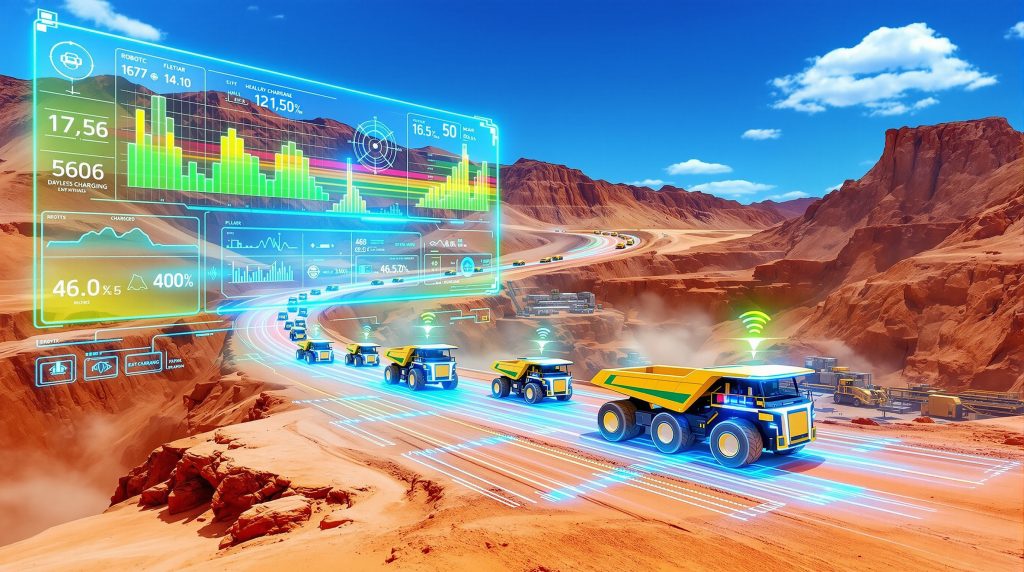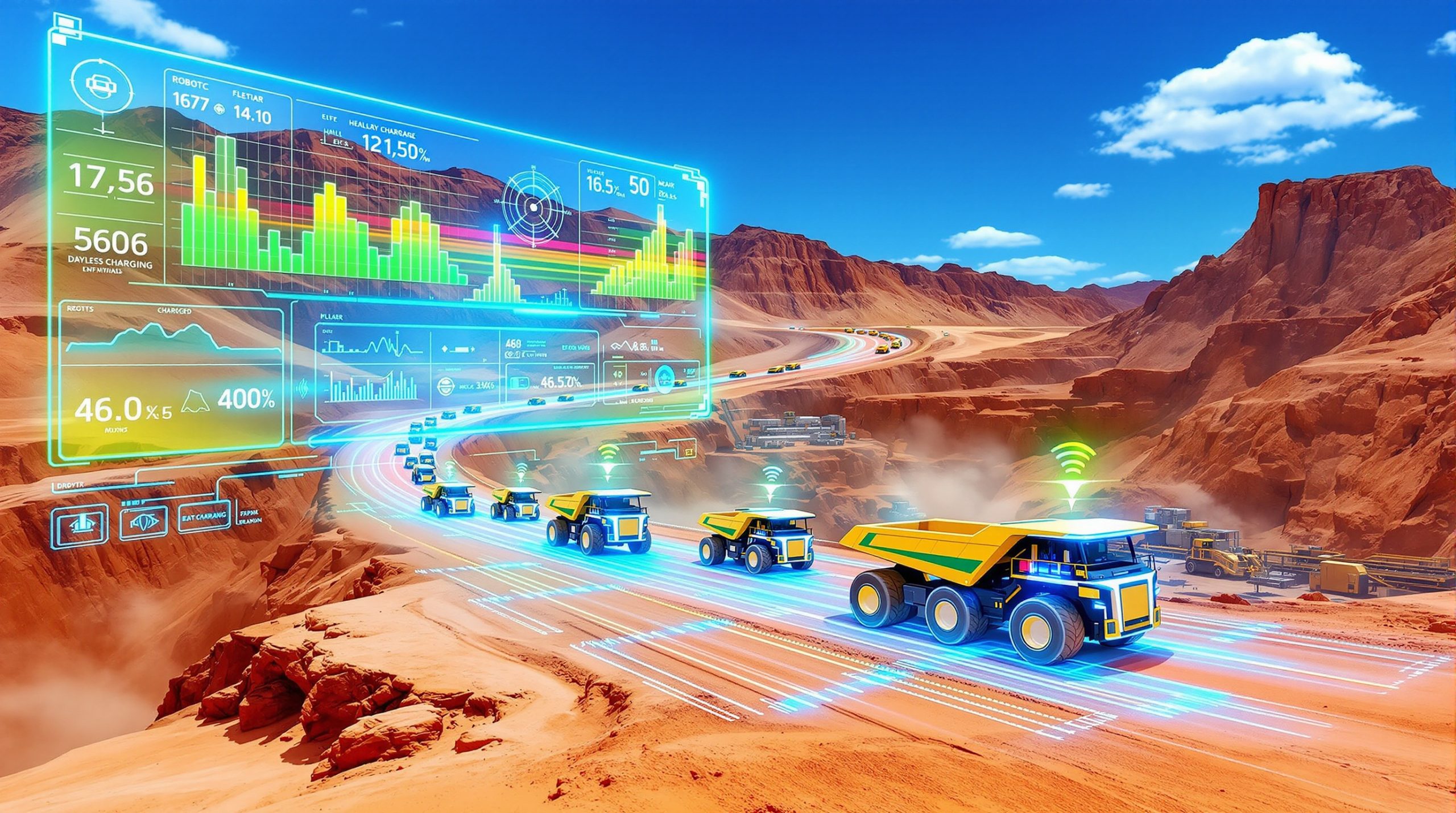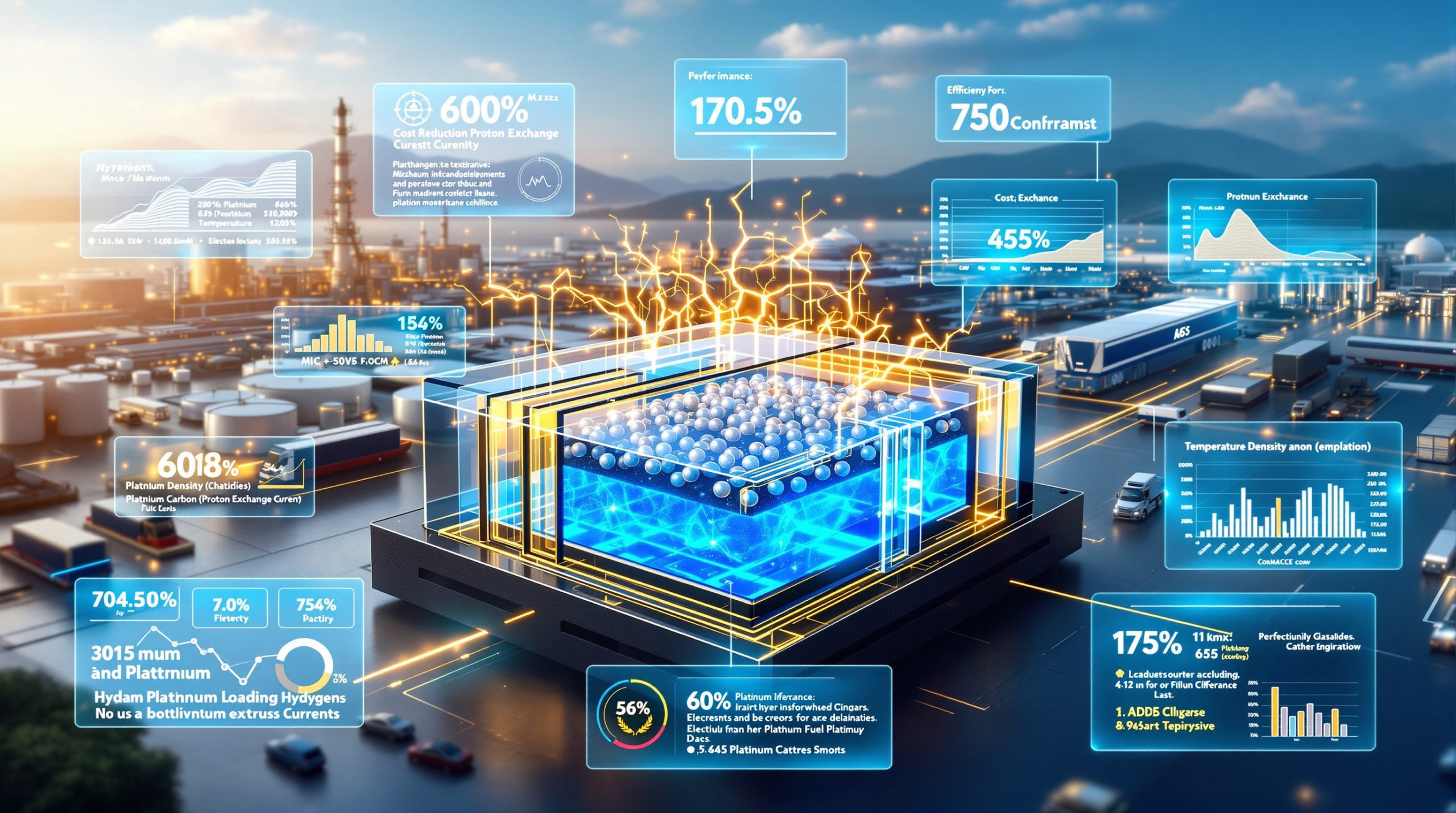The mining sector is experiencing a revolutionary transformation through electric autonomous haulage systems in mining, which represent the convergence of multiple technological breakthroughs that are fundamentally reshaping how mining companies extract and transport materials. These sophisticated platforms integrate advanced battery technologies, artificial intelligence-driven navigation, and fleet coordination algorithms to eliminate human operators while simultaneously reducing carbon emissions across mining operations.
The transformation extends beyond simple automation. Modern mining environments demand solutions capable of operating continuously in extreme temperatures, managing complex logistics across vast distances, and coordinating multiple vehicles simultaneously while maintaining strict safety protocols. Furthermore, this shift aligns with broader mining industry evolution trends towards sustainability and operational excellence.
Core Technologies Driving Mining Automation Revolution
Electric autonomous haulage systems in mining rely on four fundamental technological pillars that work in concert to deliver unprecedented operational capabilities. Battery integration modules must withstand temperature extremes ranging from arctic conditions to desert heat while maintaining consistent power delivery throughout extended duty cycles.
Advanced sensor arrays provide comprehensive environmental awareness through LiDAR systems capable of detecting obstacles and terrain variations at distances exceeding 200 meters. These sensors integrate with radar technology and thermal imaging systems to maintain operational capability during dust storms, fog, or complete darkness.
Machine learning algorithms process massive data streams in real-time, making instantaneous decisions about route optimisation, obstacle avoidance, and fleet coordination. These systems continuously learn from operational patterns, weather conditions, and equipment performance to improve efficiency over time. Consequently, data-driven mining operations have become essential for maximising the potential of these advanced systems.
Wireless charging infrastructure represents a critical enabler for continuous operations. Modern systems deploy inductive charging zones embedded directly into haul roads, allowing vehicles to recharge while travelling uphill loaded sections. Stationary charging stations at loading and dumping points provide rapid power top-ups during material handling operations.
Performance Metrics Demonstrate Substantial Improvements
Operational data from deployed systems reveals significant advantages across multiple performance indicators. Traditional diesel trucks typically operate 16-18 hours daily due to operator shift limitations and mandatory rest periods. Electric autonomous systems achieve 22-24 hours of daily operation, limited primarily by maintenance requirements rather than human factors.
| Performance Indicator | Traditional Diesel Trucks | Electric Autonomous Systems |
|---|---|---|
| Daily Operating Hours | 16-18 hours | 22-24 hours |
| Fuel/Energy Cost per Tonne | $2.50-3.20 | $0.80-1.40 |
| Maintenance Downtime | 12-15% | 6-8% |
| Safety Incidents per Million Hours | 2.3 | 0.1 |
Energy costs demonstrate dramatic reductions, with electric systems achieving 60-70% lower costs per tonne-kilometre compared to diesel alternatives. These savings reflect both the superior efficiency of electric drivetrains and the elimination of diesel fuel price volatility.
Battery Technologies Enable Continuous Mining Operations
Contemporary battery systems for mining applications have evolved far beyond consumer electronics requirements. Lithium Iron Phosphate (LFP) configurations provide the thermal stability necessary for extreme mining environments, operating reliably from -40°C to +60°C while delivering consistent power output.
These battery systems achieve cycle lives exceeding 8,000 charge-discharge cycles, representing 8-12 years of operational life under typical mining duty cycles. Rapid charging capabilities reduce downtime to 30-45 minutes for complete charge cycles, enabling seamless integration with shift patterns and operational schedules.
Solid-state battery technology represents the next evolutionary step, offering enhanced safety profiles that eliminate thermal runaway risks entirely. These systems provide energy density improvements of 40-60% over conventional lithium-ion technologies while maintaining the durability required for heavy industrial applications.
Moreover, recent developments in battery recycling breakthrough technologies are addressing sustainability concerns while reducing long-term costs.
What are the key benefits of advanced charging systems?
Dynamic charging systems enable power delivery while vehicles remain in motion. Inductive charging zones integrated into haul road surfaces provide continuous power during uphill loaded travel, when energy demands peak. These systems complement hybrid power management strategies that combine battery storage with real-time power delivery from grid connections.
Artificial Intelligence Transforms Navigation and Fleet Management
Modern autonomous haulage systems process environmental data through sophisticated machine learning algorithms capable of making split-second decisions in unpredictable conditions. These systems must navigate around wildlife, adapt to changing weather patterns, and coordinate with human-operated equipment while maintaining optimal throughput.
Predictive route optimisation algorithms analyse real-time data on road conditions, weather patterns, and traffic flow to determine the most efficient paths between loading and dumping points. The systems dynamically adjust routing based on equipment failures, geological changes, or temporary obstacles, preventing bottlenecks that could impact overall mine productivity.
Environmental adaptation represents a critical capability for autonomous systems operating in harsh mining environments. Advanced algorithms utilise thermal imaging and ground-penetrating radar to navigate during dust storms when visual sensors become ineffective. Slope stability monitoring through continuous vibration analysis helps prevent accidents by detecting potentially unstable terrain conditions before they become hazardous.
Fleet coordination intelligence enables unprecedented levels of operational optimisation. Advanced systems coordinate up to 150 autonomous vehicles simultaneously, managing loading sequences, dump scheduling, and maintenance rotations to maximise throughput while minimising energy consumption. This level of coordination would be impossible with human-operated fleets.
Leading Companies Deploy Autonomous Systems at Scale
EACON Mining Technology has emerged as a dominant force in autonomous mining deployment, claiming to operate the world's most-used autonomous haulage system. The company's 2,000+ automated trucks represent the largest deployment globally, demonstrating the commercial viability of electric autonomous haulage systems in mining operations.
Asia-Pacific markets have driven initial adoption, with Australian iron ore operations leading development. Companies like Fortescue Metals Group, BHP Billiton, and Rio Tinto have implemented autonomous systems across their Pilbara operations, establishing operational precedents for global expansion.
Chinese market expansion has accelerated rapidly, with domestic integration between autonomous system providers and battery manufacturers reducing total system costs by 35-40%. This cost reduction enables broader adoption across coal, iron ore, and copper operations in Inner Mongolia and Xinjiang provinces.
North American implementations focus on extreme environment testing, with Canadian Arctic operations validating system performance at temperatures below -45°C. Extended daylight and darkness cycles in these regions require advanced sensor fusion capabilities that push autonomous technology boundaries. However, this expansion also faces energy transition challenges that require careful consideration.
Economic Impact Analysis Reveals Substantial Cost Advantages
Financial modelling demonstrates significant long-term cost advantages despite substantial upfront capital investments. Capital expenditure analysis reveals payback periods ranging from 1.9 to 5.3 years depending on system components and operational scales.
Labour cost elimination represents the most immediate economic benefit. Average mining truck operator salaries range from $75,000-95,000 annually, with shift premiums and overtime adding 25-30% additional costs. Training and certification expenses of $15,000-20,000 per operator compound these savings.
| System Component | Cost Range (USD Million) | Payback Period |
|---|---|---|
| Fleet Electrification | $15-25 per truck | 3.5-4.2 years |
| Autonomous Control Systems | $8-12 per truck | 2.8-3.6 years |
| Charging Infrastructure | $2-4 per truck | 4.1-5.3 years |
| Software Integration | $1.5-3 per truck | 1.9-2.4 years |
Maintenance optimisation through predictive analytics reduces unscheduled repairs by 40-60%, while electric drivetrain maintenance costs run 70% lower than diesel equivalents. Optimised acceleration and braking patterns reduce tyre wear substantially, contributing additional operational savings. In addition, modern mine planning approaches integrate these cost considerations into overall operational strategies.
Environmental Benefits Transform Mining Sustainability
Electric autonomous haulage systems deliver measurable environmental improvements across multiple sustainability metrics. Direct emission elimination represents the most significant benefit, with complete elimination of Scope 1 emissions from diesel combustion. Typical reductions range from 2,500-4,000 tonnes of CO2 per truck annually.
Air quality improvements extend beyond carbon emissions. Electric systems eliminate 95% of particulate matter emissions and 100% of nitrogen oxide emissions compared to diesel alternatives. These improvements significantly benefit air quality for nearby communities and mine workers operating in confined pit environments.
Grid electricity carbon intensity varies substantially by region, ranging from 0.2-0.8 kg CO2 per kWh depending on local energy sources. Mining operations increasingly integrate renewable energy microgrids to minimise indirect emissions, with on-site solar and wind installations providing clean power for charging operations.
Battery lifecycle emissions present initial environmental costs, but operational analysis indicates these emissions offset within 18-24 months of operation under typical mining duty cycles. Advanced battery recycling programmes increasingly recover valuable materials for second-life applications, extending environmental benefits.
Advanced Safety Systems Protect Personnel and Equipment
Multi-layer safety architectures integrate redundant systems to prevent accidents and equipment damage. Primary detection systems utilise high-resolution LiDAR arrays with 200-metre detection ranges, thermal imaging cameras for low-visibility conditions, and ground-penetrating radar for subsurface hazard detection.
Secondary safety protocols include automatic emergency braking systems capable of 3-metre stopping precision, personnel detection systems using RFID and Bluetooth beacons, and geofencing technology that prevents access to restricted areas. These systems operate independently of primary navigation systems, providing fail-safe protection.
| Safety Indicator | Industry Average | Electric Autonomous Systems |
|---|---|---|
| Lost Time Injuries per Million Hours | 2.1-2.8 | 0.05-0.15 |
| Equipment Damage Incidents per Year | 15-25 per 100 trucks | 2-4 per 100 trucks |
| Near-Miss Reporting Rate | 45-60 per month | 120-180 per month |
Tertiary backup systems provide final protection layers through remote operator intervention capabilities, fail-safe shutdown protocols for system malfunctions, and emergency communication systems with mine control centres. These comprehensive safety measures result in dramatic accident reduction compared to human-operated alternatives.
Implementation Challenges Require Strategic Solutions
Technical implementation challenges centre on infrastructure requirements in remote mining locations. High-capacity electrical grid connections must be established in areas often hundreds of kilometres from existing power infrastructure. Charging station installation in harsh environmental conditions requires specialised construction techniques and materials.
System integration complexity increases with legacy equipment compatibility requirements. Mining operations rarely replace entire fleets simultaneously, requiring autonomous control systems to interact safely with human-operated equipment. Software integration across multiple vendor platforms presents ongoing technical challenges.
Regulatory approval processes vary significantly by jurisdiction, with mining safety authorities requiring extensive certification procedures. Environmental impact assessments for new electrical infrastructure can extend project timelines substantially. Insurance and liability frameworks for autonomous vehicle operations continue evolving as deployment scales increase.
Workforce transition management represents a critical social challenge. Retraining programmes for displaced truck operators require significant investment, while new technical roles demand specialised skills in automation and electrification. Community impact mitigation becomes essential in mining-dependent regions facing employment transitions.
Technology Evolution Roadmap Through 2030
Industry projections indicate rapid technological advancement and market expansion over the next five years. Battery technology advancement focuses on solid-state batteries achieving commercial viability for mining applications, with energy density improvements enabling true 24-hour operation without charging breaks.
Cost reductions of 50-60% compared to current lithium-ion systems are projected through manufacturing scale increases and technology improvements. These cost reductions will accelerate adoption across smaller mining operations currently unable to justify capital investments.
| Region | Current Autonomous Fleet | Projected 2030 Fleet | Growth Rate |
|---|---|---|---|
| Australia | 400+ trucks | 2,500+ trucks | 525% |
| North America | 150+ trucks | 1,800+ trucks | 1,100% |
| South America | 75+ trucks | 1,200+ trucks | 1,500% |
| Africa | 25+ trucks | 800+ trucks | 3,100% |
Artificial intelligence enhancement will enable predictive maintenance algorithms reducing downtime by 80%, while swarm intelligence capabilities will coordinate operation of 500+ vehicles simultaneously. Integration with geological modelling will enable real-time ore grade optimisation, maximising resource recovery while minimising waste rock handling.
Investment Opportunities in Electric Mining Automation
Financial markets increasingly recognise strategic value in companies developing and deploying autonomous electric mining systems. Public market leaders include equipment manufacturers transitioning from diesel to electric platforms, software companies developing fleet management and AI systems, and battery manufacturers specialising in industrial applications.
Mining company adopters demonstrate operational cost advantages that translate to improved profit margins and ESG performance improvements. Early adopters with large-scale operations justify capital investments through rapid payback periods and sustained operational savings.
Private investment trends focus on charging infrastructure development companies, autonomous vehicle sensor and software startups, and battery recycling and second-life applications. Strategic partnership formations between mining companies and technology providers accelerate development while sharing investment risks.
The CATL and EACON partnership represents this trend toward strategic collaboration, combining battery technology leadership with autonomous system expertise. "This partnership aims to address key mining challenges such as reducing environmental impact, enhancing safety, and improving operational efficiency through the development of smart, safe, and sustainable solutions," according to company statements.
Furthermore, future mining operations are expected to be completely transformed by these technological advances.
Venture capital focus areas include companies developing mining-specific power solutions, advanced sensor technologies for extreme environments, and integrated fleet management platforms. These investments position stakeholders to capitalise on the projected dramatic growth in autonomous mining deployments through 2030.
Disclaimer: This analysis includes forward-looking projections and market estimates that involve inherent uncertainties. Actual deployment rates, technology performance, and economic returns may differ substantially from projections. Investment decisions should incorporate comprehensive due diligence and risk assessment appropriate to individual circumstances.
Ready to Invest in the Next Mining Technology Revolution?
Discovery Alert's proprietary Discovery IQ model delivers real-time alerts on significant ASX mineral discoveries, instantly empowering subscribers to identify actionable opportunities in mining technology companies and autonomous systems developers ahead of the broader market. Begin your 30-day free trial today and secure your market-leading advantage in this rapidly evolving sector.




